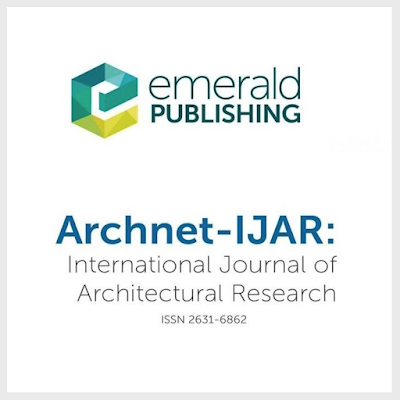Special Issue, Archnet-IJAR: Vol 15 No 1: Architecture, Urbanism, and Health in a Post Pandemic Virtual World
Purpose
The highly contagious coronavirus and the rapid spread of COVID-19 disease have generated a global public health crisis. Crises are being addressed at various local and global scales through social distancing measures and guidelines, emerging working and living patterns and the utilisation of technology to partially replace physical learning environments. The purpose of this article is to capture the key messages of the contributions published in this special edition of Archnet-IJAR: International Journal of Architectural Research, Volume 15, Issue 1, March 2021. Reviewing more than 70 submissions, 15 articles have been identified that are contributed by 35 scholars, educators and practitioners from 12 countries. The article calls for the need to embed trans-disciplinarity in current and future built environment research.
Design/methodology/approach
Driven by the fact that architecture, urban design and planning and built environment studies interact and have direct correlation with public health and virus spread. The approach to develop and present the key messages of the contributions is premised on three areas: (a) the pandemic condition as it relates to the built environment, (b) analytical reflections on the emerging themes and (c) the diversity and complexity embedded in these themes.
Findings
While some contributions speak to the particularities of their contexts, others address regional or global parameters. The enquiry into architectural research, architectural education and architectural design indicates some of the important methods and tools to address the accelerated adoption, adaption and redesign needed to create a new and better normal which embeds flexibility, adaptability and continuous learning. The papers represent brilliant investiture to address the momentous insinuations the COVID-19 condition has on the built environment.
Research limitations/implications
The diversity of implications reveals potential alternative futures for urbanity and society and the associated education and practice of future built environment professions. While the contributions invite us to critically envisage possibilities for future research and collective action, critical fast-track empirical research is needed to address how health is an integral component in the production of architecture and urban environments.
Originality/value
The diversity, complexity, depth and breadth of the contribution convey important insights on people, health and the spatial environments that accommodate both. Trans-disciplinarity, as it relates to research and action and to the production of urban environments, is viewed as a form of learning involving co-operation among different parts of society, professionals and academia in order to meet complex challenges of society such this pandemic condition. This approach has enabled the identification of three future research areas in architecture urbanism that include implications of virus spread on urban environments, how spatial and social distancing measures and protocols are altering our understanding of spatial design.
See full special issue here >>>>>








